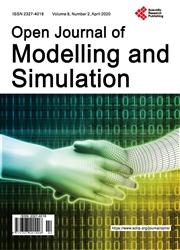Demand and Capacity Modelling in Healthcare Using Discrete Event Simulation
引用次数: 5
Abstract
The NHS is right now confronting huge pressures relating to demand and capacity in radiology. The purpose of this research has been to provide information about MRI usage, details of operational aspects of MRI services, and to ascertain the planning intentions of NHS radiology services to keep up and create MRI capacity. The report expands on using Discrete Event Simulation (DES) to inspect and plan the utilisation of NHS hospital resources for the radiology department to help a 24 hr service that is available to outpatients which will help with diminishing patient waiting time, better resource usage, understanding the capacity and demand. Consequently, this research examines to adjust staff and resources with the demand of the MRI. The research was investigated using DES in various scenarios to find which resources are inactive; patients are treated slowly. DES helped in discovering resource utilisation and outpatient throughout the system. It additionally helped in distinguishing the bottlenecks in patient flow. The DES simulation results demonstrated that time for the outpatient in the system is less and more outpatients have been treated too. There is a higher level of outpatient patients leaving the system under 120 minutes. The report uncovered an MRI report interpretation time. Reception room time and MRI waiting room time are decreased significantly. It additionally exhibited with an expanded outflow of outpatients, resources, for example, MRI capacity and radiographer utilisation expanded.使用离散事件模拟的医疗保健需求和能力建模
NHS目前正面临着与放射学需求和能力有关的巨大压力。本研究的目的是提供有关MRI使用的信息,MRI服务操作方面的细节,并确定NHS放射服务的规划意图,以保持和创造MRI能力。该报告扩展了使用离散事件模拟(DES)来检查和规划NHS放射科医院资源的利用情况,以帮助门诊患者提供24小时服务,这将有助于减少患者等待时间,更好地利用资源,了解容量和需求。因此,本研究探讨如何根据MRI的需求调整人员和资源。该研究使用DES在各种情况下进行调查,以找出哪些资源是不活跃的;病人治疗缓慢。DES帮助发现整个系统的资源利用率和门诊情况。它还有助于识别患者流中的瓶颈。DES仿真结果表明,系统内门诊病人的时间较少,门诊病人也较多。门诊病人在120分钟内离开系统的比例更高。报告发现MRI报告解释时间。接待室时间和核磁共振候诊时间明显减少。此外,它还表现出门诊病人、资源外流的扩大,例如,核磁共振成像能力和放射技师的利用扩大。
本文章由计算机程序翻译,如有差异,请以英文原文为准。
求助全文
约1分钟内获得全文
求助全文

 求助内容:
求助内容: 应助结果提醒方式:
应助结果提醒方式:


